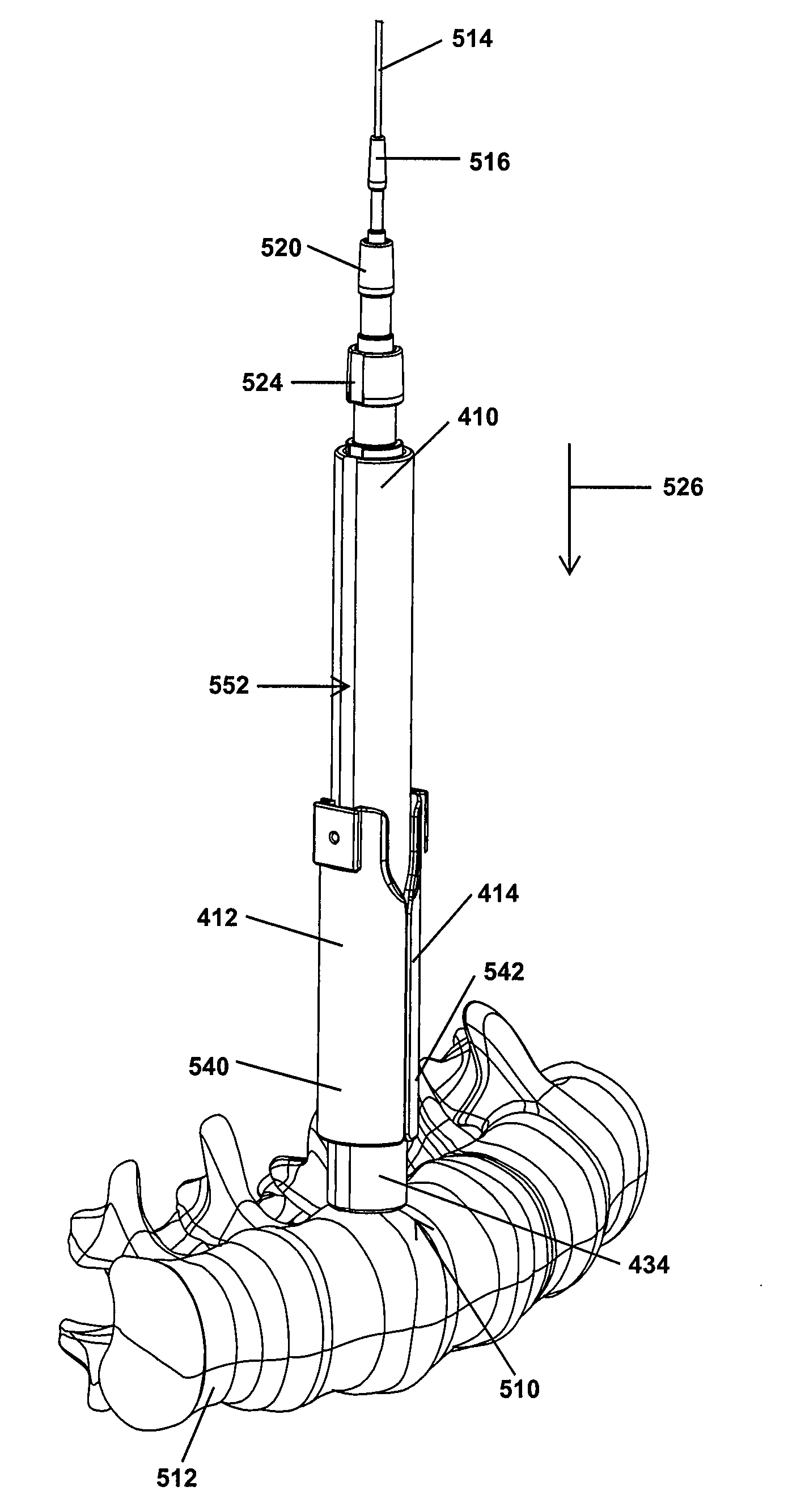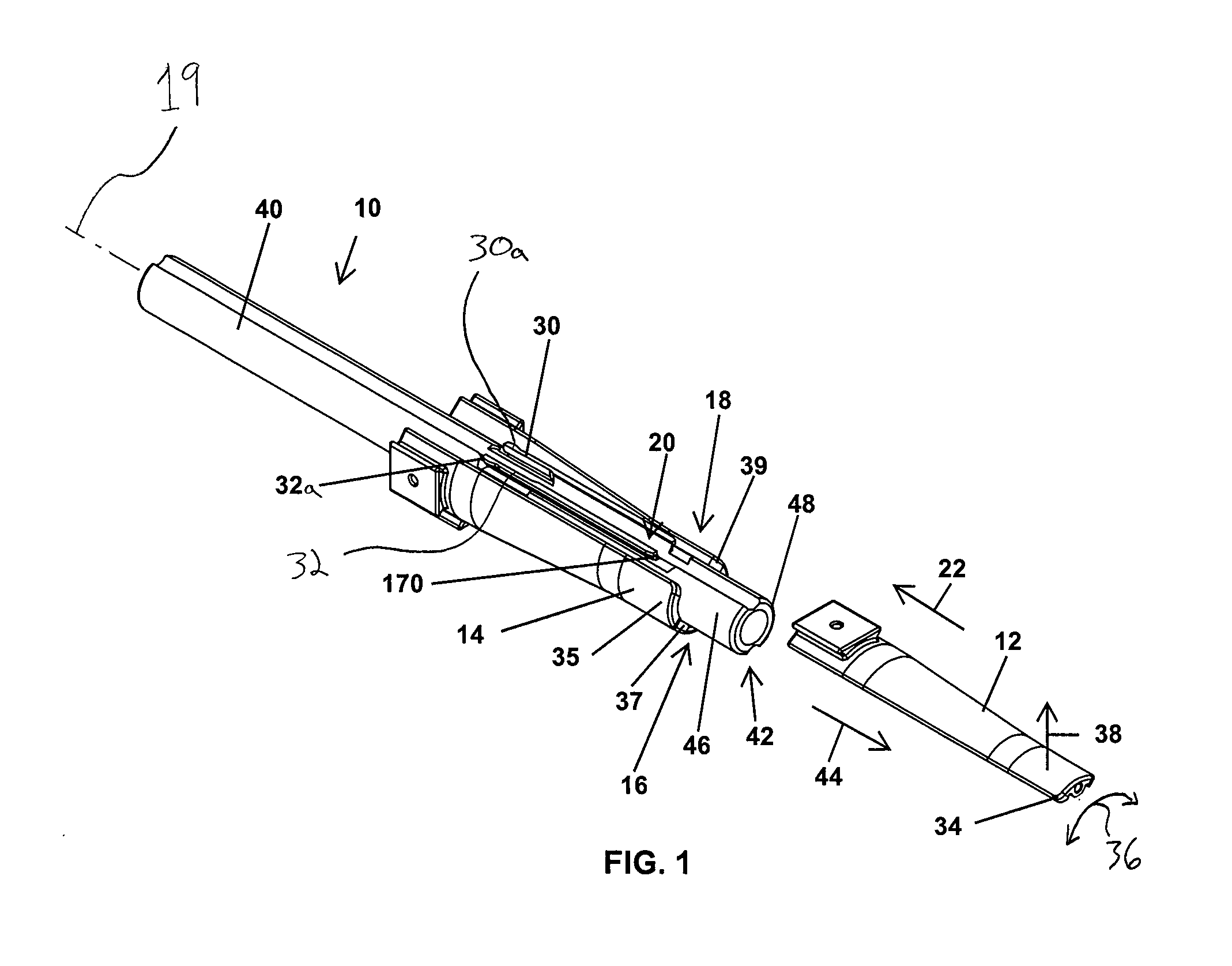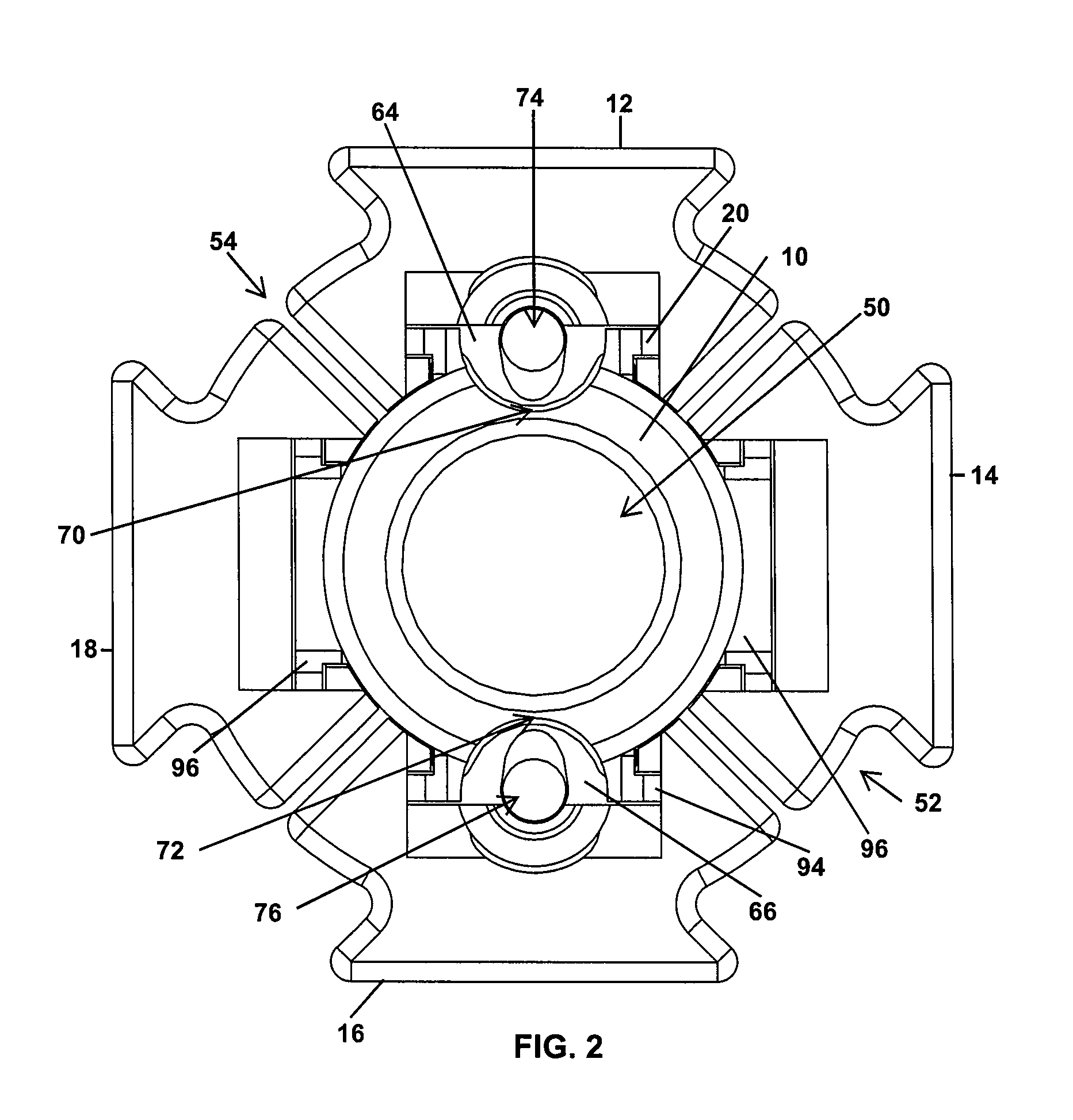Apparatus and method for enlarging an incision
a retractor blade and incision technology, applied in the field of system and method for providing access to the surgical site, can solve the problems of tight enveloping of the tissue surrounding the retractor blade, difficulty in advancing the retractor blade toward the surgical site, and complicating the surgical procedure, so as to minimize the strain on the tissue surrounding, improve the ease, and facilitate the approach. the effect of speed
- Summary
- Abstract
- Description
- Claims
- Application Information
AI Technical Summary
Benefits of technology
Problems solved by technology
Method used
Image
Examples
Embodiment Construction
[0042]In FIGS. 1-6, a guide dilator 10 for inserting tissue engaging members, such as retractor blades 12, 14, 16, 18, through an incision and into position adjacent a surgical site is provided. The guide dilator 10 provides a rigid support for the retractor blades 12, 14, 16, 18 as the guide dilator 10, and the retractor blades 12, 14, 16, 18 connected thereto, slide along one or more initial dilators 516, 520 (see FIG. 12) into position adjacent a surgical site. The guide dilator 10 supports the retractor blades 12, 14, 16, 18 against resistance from muscles, tendons, and other tissues and to limit splaying of the retractor blades 12, 14, 16, 18 as they are advanced along the guide dilator 10 into the incision. In this manner, the guide dilator 10 allows a surgeon to easily advance the retractor blades 12, 14, 16, 18 into an incision without the retractor blades 12, 14, 16, 18 shifting and permitting tissues to encroach into gaps between the blades 12, 14, 16, 18.
[0043]With refere...
PUM
 Login to View More
Login to View More Abstract
Description
Claims
Application Information
 Login to View More
Login to View More - R&D
- Intellectual Property
- Life Sciences
- Materials
- Tech Scout
- Unparalleled Data Quality
- Higher Quality Content
- 60% Fewer Hallucinations
Browse by: Latest US Patents, China's latest patents, Technical Efficacy Thesaurus, Application Domain, Technology Topic, Popular Technical Reports.
© 2025 PatSnap. All rights reserved.Legal|Privacy policy|Modern Slavery Act Transparency Statement|Sitemap|About US| Contact US: help@patsnap.com



